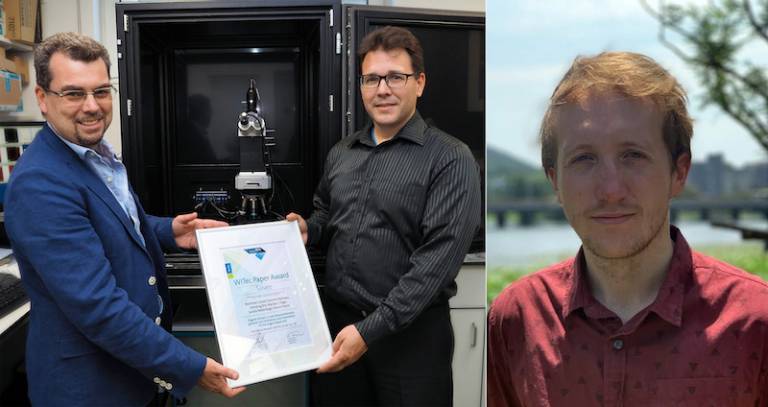2019 WITec Paper Award Silver: The origins of granular iron formations
1 August 2019
Congratulations to Matthew Dodd, Dominic Papineau and team for their recent award of the WITec Paper Award Silver for investigating the origins of Palaeoproterozoic granules, concluding they could also be promising astrobiological biosignatures.

WITec recently announced the winners of their annual Paper Award, which recognizes three outstanding peer-reviewed articles from the previous year that feature data acquired with a WITec microscope. The Paper Award Silver was awarded to Matthew S. Dodd (UCL Earth Sciences) for investigating the origins of granular iron formations (GIFs) together with his colleagues Dominic Papineau (UCL ES), Zhenbing She, Marilyn L. Fogel, Sandra Nederbragt and Franco Pirajno from research institutions worldwide.
Traces of early microbial life on Earth can be found in the form of their biosignatures preserved in sedimentary rocks. Valuable information on the origin of life can thus be gained from the characterization of sediments. However, deciding if the organic material in sediments is actually of biological origin is not always straightforward. The origins of GIFs continue to be debated. There are publications that provide support for theories of sediment reworking, mineral precipitation or biological origins. Together with his colleagues, Matthew Dodd characterized Palaeoproterozoic granules from various locations around the world (China, USA, Canada and Australia) using Raman imaging and other techniques. They discussed their findings with respect to potential origins of the granules and found that biological processes and chemically-oscillating reactions played a key role in GIF formation in all locations, although other processes may have contributed as well. For example, some GIFs originated from diagenetic reactions, in which organic matter was oxidized while sulphate or ferric iron was reduced by sulphate- or iron-reducing bacteria. The authors concluded that, “As such, granules have excellent potential to be considered as promising biosignatures for studying Precambrian biogeochemistry, as well as astrobiology.”
Matthew S. Dodd, Dominic Papineau, Zhenbing She, Marilyn L. Fogel, Sandra Nederbragt, Franco Pirajno (2018), Organic remains in late Palaeoproterozoic granular iron formations and implications for the origin of granules. Precambrian Research 310, pp. 133-152. doi.org/10.1016/j.precamres.2018.02.016
 Close
Close

